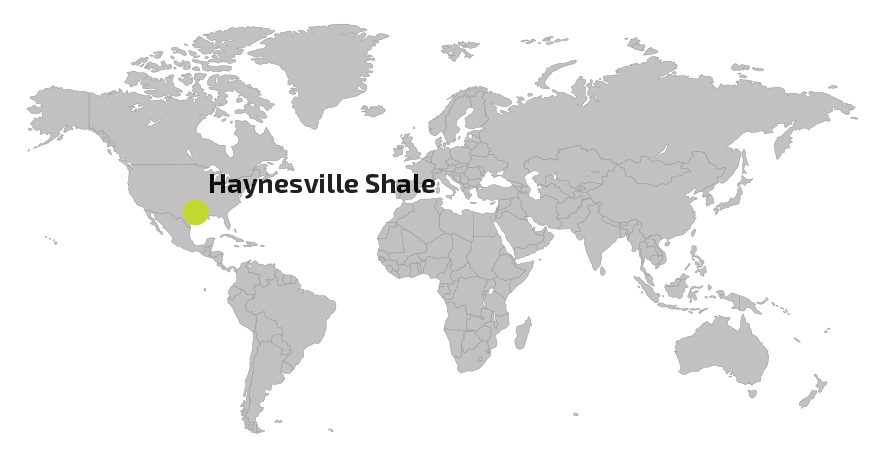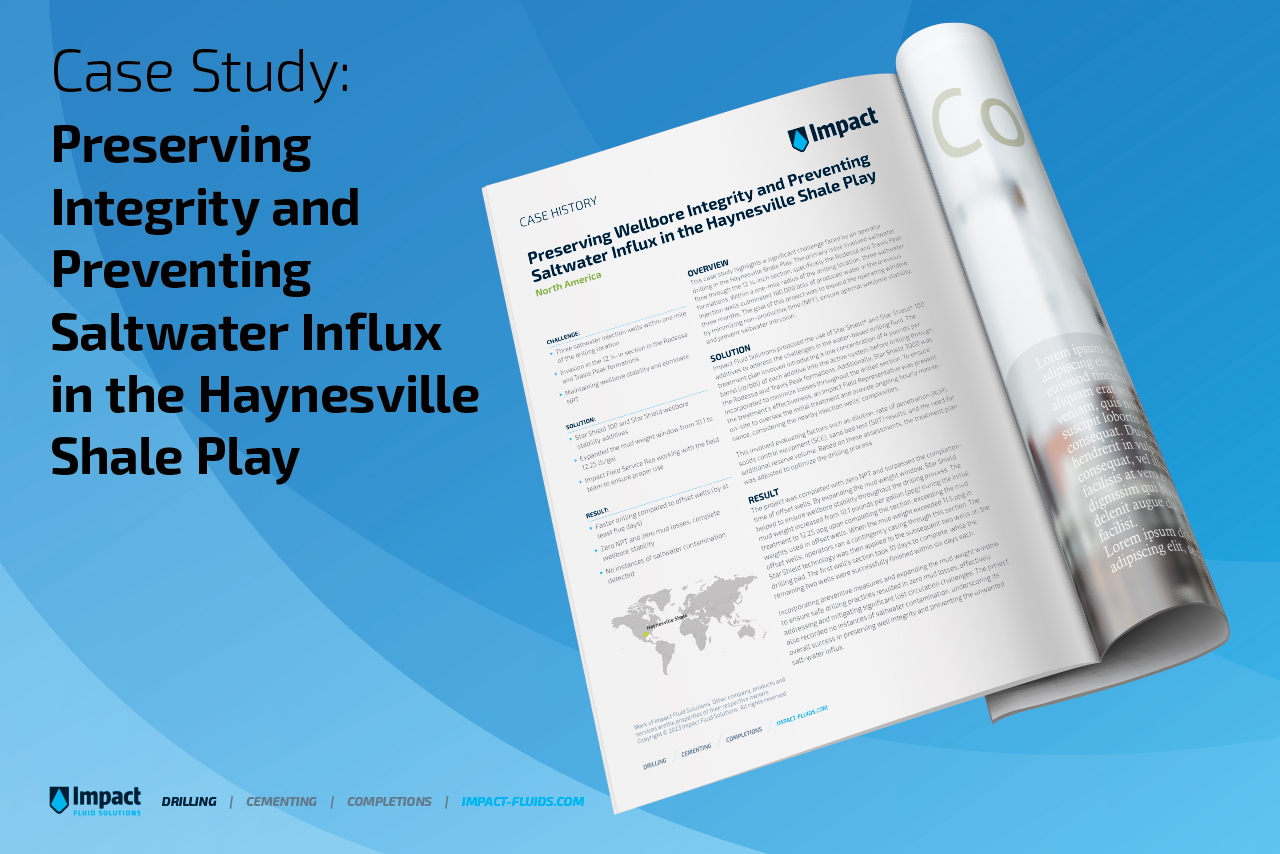

This case study highlights a significant challenge faced by an operator drilling in the Haynesville Shale Play. The primary issue involved saltwater flow through the 12 ¼-inch section, specifically the Rodessa and Travis Peak formations. Within a one-mile radius of the drilling location, three saltwater injection wells culminated 180,000 bbls of produced water in the previous three months. The goal of this project was to expand the operating window by minimizing non-productive time (NPT), ensure optimal wellbore stability, and prevent saltwater intrusion.
Impact Fluid Solutions proposed the use of Star Shield® and Star Shield® 100 additives to address the challenges in the water-based drilling fluid. The treatment plan involved introducing a low concentration of 4 pounds per barrel (lb/bbl) of each additive into the active system before drilling through the Rodessa and Travis Peak formations. Additionally, Star Shield 3000 was incorporated to minimize losses throughout the drilled section. To ensure the treatment’s effectiveness, an Impact Field Representative was present on-site to oversee the initial treatment and provide ongoing hourly maintenance, considering the nearby injection wells’ complexities.
This involved evaluating factors such as dilution, rate of penetration (ROP), solids control equipment (SCE), sand bed test (SBT) results, and the need for additional reserve volume. Based on these assessments, the treatment plan was adjusted to optimize the drilling process.
The project was completed with zero NPT and surpassed the completiontime of offset wells. By expanding the mud weight window, Star Shield helped to ensure wellbore stability throughout the drilling process. The mud weight increased from 10.1 pounds per gallon (ppg) during the initial treatment to 12.25 ppg upon completing the section, exceeding the mud weights used in offset wells. When the mud weight exceeded 11.5 ppg in offset wells, operators ran a contingency casing through this section. The Star Shield technology was then applied to the subsequent two wells on the drilling pad. The first well’s section took 10 days to complete, while the remaining two wells were successfully finished within six days each.
Incorporating preventive measures and expanding the mud weight window to ensure safe drilling practices resulted in zero mud losses, effectively addressing and mitigating significant lost circulation challenges. The project also recorded no instances of saltwater contamination, underscoring its overall success in preserving well integrity and preventing the unwanted salt-water influx.
